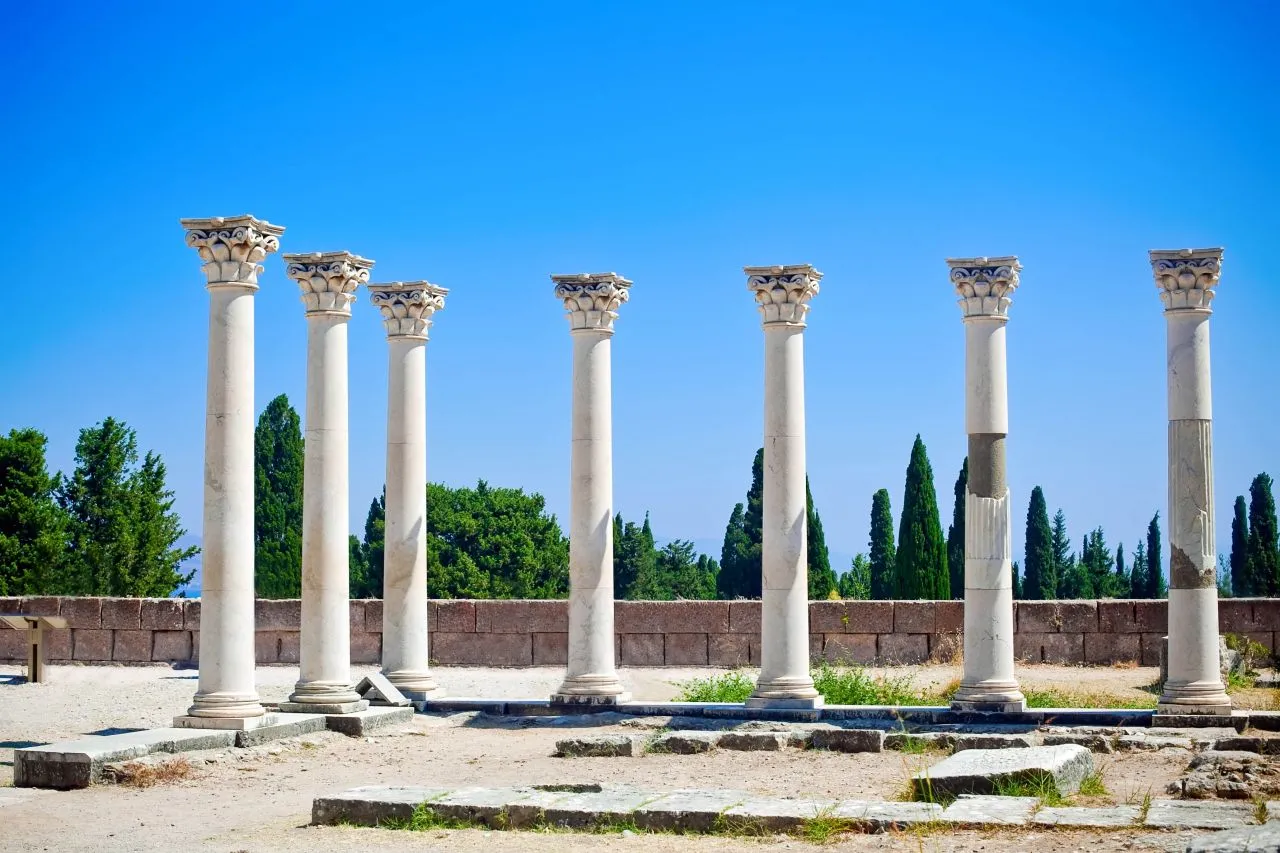Destinations
- Home
- Destinations
- Dodecanese Islands
Dodecanese Islands
Rhodes, Kos, Astypalea, Patmos, Karpathos, Kalymnos, Nisyros, Symi and Kastelorizo
A cluster of islands at the southeastern edge of the Aegean that includes Rhodes and Kos, the Dodecanese islands form a bridge between Europe and the East. Whichever of the Dodecanese islands you go to, you'll find traces of peoples and cultures that have made their mark over the centuries: Ionians, Romans, Byzantines, Venetians, Ottomans and Italians. Each island has its own character and all offer opportunities for relaxation, sightseeing, adventure and great food - with a backdrop of beautiful beaches. Some Dodecanese islands are extremely popular, like Rhodes and Kos, and others have a virgin charm, like Kalymnos, Symi, Kastelorizo, Kasos, Karpathos, Astypalea, Halki, Lipsi and volcanic Nisyros. And then there's Patmos, the Jerusalem of the Aegean, famous as the place where St John wrote the Bible's Book of Revelation.
Rhodes is a medieval masterpiece with a beautifully preserved medieval Old Town of Rhodes (a Unesco World Heritage Site), some incredible monuments, such as the Street of the Knights and the Palace of the Grand Masters. Further afield is the ancient acropolis of Lindos, as well as the grand public buildings of Mandraki and the small fort of Agios Nikolaos. The Valley of the Butterflies, a lush green canyon that attracts millions of butterflies and hundreds of visitors every year, is also popular.
Kos has numerous must-sees locations, chief among them the Asclepion, built to continue the work of Hippocrates, the father of modern medicine and the island's most famous son.
Astypalea is a tiny piece of land and one of the most tranquil places in Greece. Your first stop on Astypalea should be Hora with its windmills and whitewashed homes, reminiscent of a Cycladic settlement.

Patmos is an island in the Dodecanese. The Monastery of St John the Theologian, the picture-perfect Hora of with its grand, stately homes and the mystical ambience of the Cave of the Apocalypse, are just part of what give Patmos its unique identity.
Karpathos is a wild, untouched, and deeply traditional island. The village of Olympus is a 9th-century medieval hamlet that continues to defy the march of time with its windmills, old stone ovens and picturesque chapels, making it one of the most impressive sights of the Aegean. And don't miss out on Apella, a beach of unique beauty, and nearby Kasos for that special kind of getaway.
Kalymnos is the home of sponge divers and rock climbers. Among the many treasures of Kalymnos are Vathy and Esperidon, the most beautiful fjord in the Aegean. And don't forget the sea sponges, it's what made this island famous.
Nature reigns supreme on Tilos. Highlights of the island include the Harkadio Cave, where fossilized bones of dwarf elephants were discovered, and the great monastery of Agios Panteleimon.
Symi and Kastelorizo are famous for their neoclassical settlements that are architectural masterpieces. They are also ideal for swimming as they are wrapped in dazzling azure waters.
Wild Nisyros was formed by a volcano and boasts not one but three craters in its interior, along with a lunar landscape and the picturesque port of Mandraki.
Very close to cosmopolitan Rhodes but so very different, Halki is an incredibly beautiful little island. Its picturesque town greets you with colorful houses and around the island wonderful are beaches where life moves at a laid-back pace. Ftenagia beach with its emerald green waters is simply unique.
Leros is an island of green and blue in perfect harmony. With excellent local cuisine and bays with water as clear as glass. Discover the mysteries of Leros in Lakki, Agia Marina, Alida and Padeli. It makes an ideal base for exploration by boat, not to mention the numerous opportunities for scuba-diving.
Lipsi, Arki, Agathonisi and Marathi are the little unexplored gems are rocky islets shaped into incredible forms by the elements, words that end up in white sandy beaches and turquoise coves.

